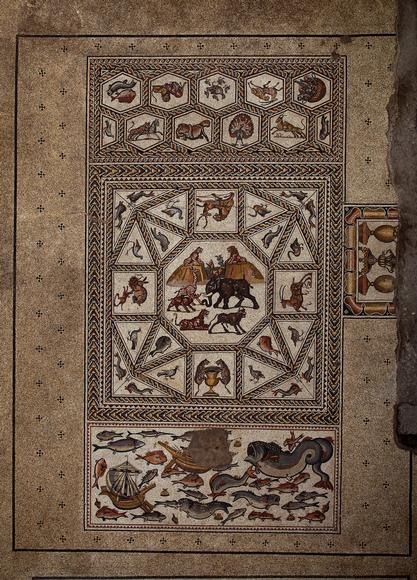1. The Northern part including the scene with the fishes

1.1. Mosaic’s stratigraphy:
Tesselatum – natural colored limestone tesserae
Lime bed – white colored fine lime mortar. The mortar composition will be defined in the future.
Nucleus - white colored lime mortar layer, 2 cm in depth. The mortar composition will be defined in the future.
Rudus – gray colored lime mortar layer, 5cm in depth. The mortar composition will be defined in the future.
Statumen – First (upper) layer of very carefully arranged and leveraged stones (broken limestone blocks-10x7x4cm); second layer of very carefully arranged and leveraged white river stones (7-12cm) and well compacted soil. The soil characteristics will be investigated later.
1.2. Execution techniques:
Joins indicating daily applications of mortars (giornate) were observed and documented. Incisions were made into the mortar to act as guide lines for the frames of black tesserae and traces of red pigment were found inside part of the incision. Synopia (painting on the nucleus layer before the laying out of the tesserae) was found under the fish panel – the characterization of the pigments will be done together with the other materials. The mosaic was executed with high precision – every tessera was laid in its exact geometrical place, all the figures in the complicated composition were placed carefully in the calculated area, and the geometrical patterns are perfectly calculated and executed, making it clear that a great master worked here.
Conservation: 1 | 2 | 3 | 4 | 5 | 6 | 7 | 8 | 9 | 10 | 11 | Next page




